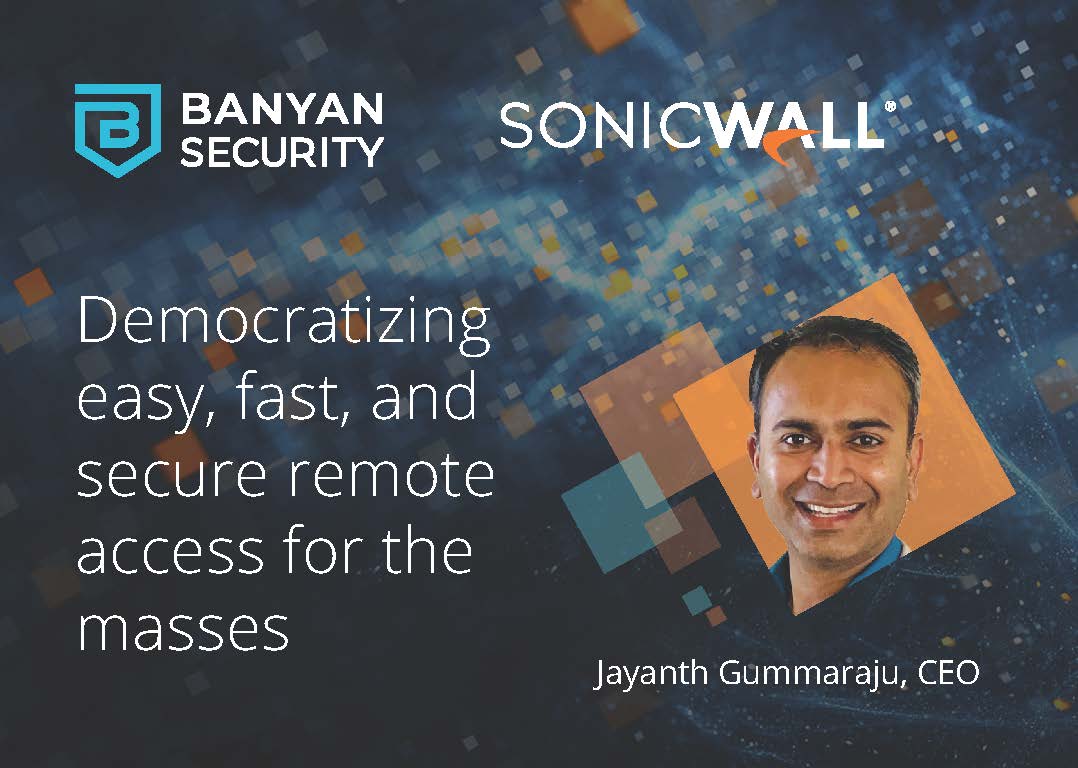VPNs, or Virtual Private Networks, have been around for quite some time. But in their legacy form, remote access VPNs are not the safest security solution in this post-COVID, work-from-anywhere, hybrid work environment we live in today. There are key differences between Zero Trust Network Access and traditional VPN that we highlight here, as well as explain how Banyan Security Platform’s Zero Trust Network Access (ZTNA) capabilities may be the perfect next-gen security and remote access solution for your organization. But how do you know more about VPN vs zero trust?
Legacy VPNs Struggle to Meet Modern Enterprise Demands
Virtual Private Networks (VPN) date as far back as 1995 when companies started using them to connect users to corporate networks. Once access was granted, a trust model based on an assumed perimeter and user authentication to the network was formed making all resources on that network available to the user.
Today, legacy VPNs are part of the IT fabric of the world and used in just about every organization and company. But, as most companies have moved to a more remote or hybrid workstyle, many network-centric solutions like traditional VPNs do not meet a modern organizations’ scale, performance, and usability needs — especially with complex hybrid cloud environments that must enable secure access across their on-premises and cloud deployments regardless of user location.
It’s no secret that remote access is a top security conundrum for many organizations. In fact, in a poll conducted by Banyan, ‘Remote Access’ was cited as one of the top-four company security pain points alongside ‘Cloud Security’, ‘Data Privacy’, and ‘Phishing’.
With mountains of information moving through various portals, homes, and cloud services, the focus is still on access by identity. VPNs create a massive security liability as they offer overly-broad access to sensitive corporate assets and infrastructure, which permits lateral movement that hackers can use for ransomware and other malicious activity.
And although VPN vendors have begun to roll-out “next generation” technology, many organizations are moving away from these legacy VPNs toward strategies and frameworks that provide better security and manageability.
Zero Trust Access: Your Path to Legacy VPN Freedom
According to International Data Corporation (IDC) research, a premier global provider of market intelligence and advisory services, VPNs were used in 68% of major security incidents involving remote access tools. As flaws in legacy VPN remote access solutions are illuminated by the massive work-from-home migration; IDC, also predicts that, by the end of this year, budgets for modern software-defined secure access solutions will quadruple.
Historically, many companies have addressed this need by building perimeters around their on-premises data centers. This approach worked when the systems, applications (and users) stayed within that perimeter. But, after decades of incremental change in remote access technologies and deployment models, everything is now offered in the cloud and, thus, easily accessible by all.
As enterprises progress along their digital transformation journey, they must enable secure access across their on-premises, hybrid, and multi-cloud environments. Regardless of the deployment model, a common denominator runs throughout — legacy VPN technologies just don’t cut it for today’s operating environments.
That’s why many enterprises are looking towards zero trust network access solutions that provide secure access to an organization’s applications, data, and services based on clearly defined access control policies.
A Zero Trust approach to remote and on-premises access promises better security, manageability, and performance than legacy VPNs. It literally means Zero ‘Unverified’ Trust, which is based on an implicit ‘trust no-one’ approach to IT security. Zero Trust assumes that everyone who has access to your company’s infrastructure could be a threat to your files, data, and other important and sensitive information.
In a zero-trust environment, the principle of least privilege is applied, giving workers access to exactly what they need to do their job, unlike legacy VPNs, which grant overly-broad access to entire networks.
With zero trust principles applied through a solution such as the Banyan Security Platform, companies can:
- More easily roll out new business applications
- Narrow access based on identity and resource
- Consolidate oversight into a cloud- native security solution
- Leverage existing investments in security and infrastructure
- Support employees, contractors, consultants, and partners with a single policy that covers both on-premises and remote access to resources.
VPN vs Zero Trust – Moving Beyond VPN
If the problem and answer is so apparent, then why isn’t everyone hopping on the Zero Trust train? Well, for starters, most enterprises have significant business processes set up around their legacy VPNs, so a wholesale replacement can seem daunting, if not entirely infeasible.
Full-blown swap-outs aside, it’s hard and costly to change the infrastructure of a company’s IT system. Even on the smallest of scales, things tend to break with change. And, as well all know, breaking business processes is not a good thing for your bottom line. Plus, a change in one area often requires tweaks in another, making the source of the problem difficult to track down when something goes awry.
The great thing about the Banyan Security Platform is that there’s no need to rip and replace the infrastructure you already have in place. ZTNA can be deployed alongside your existing infrastructure and security tools — offering an incremental “deploy-as-you-go” model for admins and users that includes co-existence with VPNs, one app or service at a time — seamlessly integrating with existing MDM/UEM, IDP, and EDR investments.
Zero trust access policies can be easily created and even shared among those who manage access privileges. Continuous authorization of users and the security posture of the device they are utilizing informs in real-time whether the security access policies are being met. We end up with a more secure initial access grant, and if warranted, an existing access session will be severed if anything changes to cause non-compliance with policy.
For organizations that have overly-provisioned, Layer 3 tunnels, another challenge is know what users are currently connecting to and transitioning to granular, least privilege access policies. Banyan’s Discover and Publish functionality will discover on-premises and cloud resources that are being accessed by users and then provide simplified publish functionality for users or groups.
It’s important to remember that zero trust is not an overnight project where a single switch is flipped, and you suddenly have a no-VPN environment. As a company, you should plan to make the transition over time.
Banyan makes it easy to deploy zero trust.
While it may sound daunting, the Banyan Security Platform allows companies to make this journey incrementally, alongside existing VPN environments as business and risk requirements dictate. The platform also enables you to minimize risk exposure and improve your security posture as the transition takes place.
A ZTNA solution provides many benefits with few downsides. However, we recognize that there are specific use cases where a secure tunnel solution makes sense, and for those situations Banyan’s Service Tunnel is the perfect solution, featuring zero trust protections like device trust and continuous authorization.
When done correctly, zero trust gives everyone — from on-campus and remote employees to contractors, consultants, and third-party vendors — an easy, frictionless way to engage with your organization. Banyan can help you identify a sensible but meaningful first project to demonstrate how straightforward an incremental deployment would be in your own IT environment.



